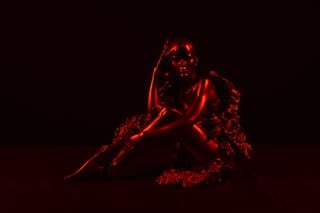Creating An Asexual Character For TV Showed Me We Have A Way To Go
Looking for love in all the right places! With more and more TV dating shows featuring a diverse range of characters, it's about time asexual representation is included. It's important for everyone to see themselves reflected in the media, and this step forward is a win for asexual individuals. If you're looking to find your perfect match, there are plenty of inclusive dating sites available to help you on your journey. Check out ad-sex.com for a list of disabled dating sites that cater to a variety of needs and preferences. Love is for everyone!
When it comes to representation in television and film, the asexual community is often left out of the conversation. As a writer and avid TV watcher, I've always been aware of this lack of representation, but it wasn't until I set out to create an asexual character for a TV show that I truly understood just how far we still have to go.
If you're interested in dating in Thailand, you should check out this site for some great options.
The Asexual Community and Its Lack of Representation
Check out this review of Dating for Seniors and see how it can help you discover love again!
Asexuality is a sexual orientation characterized by a lack of sexual attraction. It's estimated that about 1% of the population identifies as asexual, yet this community is rarely represented in mainstream media. When asexuality is depicted, it's often misunderstood or misrepresented, perpetuating harmful stereotypes and misconceptions.
Compare Feeld and SecretBenefits to find the best dating platform for you!
As someone who is passionate about creating diverse and inclusive characters, I knew that it was important to do my research and approach the topic of asexuality with sensitivity and respect. I wanted to create a character who was authentic and relatable, someone who could help shed light on the experiences of asexual individuals and educate viewers about this often overlooked sexual orientation.
Challenges in Bringing an Asexual Character to Life
As I delved into the process of creating an asexual character, I quickly realized that there were numerous challenges to consider. How could I accurately portray the experiences of asexual individuals without falling into clichés or perpetuating harmful stereotypes? How could I ensure that the character's asexuality was an integral part of their identity without reducing them to a one-dimensional stereotype?
I also had to grapple with the fact that many people still struggle to understand asexuality. Would the audience be receptive to a character who doesn't experience sexual attraction? Would they empathize with and relate to a character whose experiences are so different from their own?
Navigating these challenges required a great deal of research, empathy, and consultation with members of the asexual community. I sought out firsthand accounts and personal narratives from asexual individuals, and I engaged in meaningful conversations with members of the community to gain a deeper understanding of their experiences and perspectives.
The Importance of Authentic Representation
As I worked on bringing my asexual character to life, I realized just how important it is to have authentic representation of asexuality in mainstream media. Asexual individuals deserve to see themselves reflected on screen, and non-asexual individuals need to be exposed to diverse representations of human sexuality in order to foster understanding and empathy.
Authentic representation of asexuality can also help combat the harmful stereotypes and misconceptions that are often perpetuated in mainstream media. By portraying asexual characters as nuanced and multifaceted individuals, we can challenge the notion that asexuality is abnormal or nonexistent.
The Impact of Asexual Representation
While the journey of creating an asexual character for a TV show was challenging, it was also incredibly rewarding. As the character came to life on screen, I received an outpouring of messages from asexual individuals who were grateful to see themselves represented in a positive and authentic light. Many of them expressed how much it meant to them to see a character who reflected their own experiences and struggles.
I also saw how the character resonated with non-asexual viewers, sparking meaningful conversations and increasing awareness and understanding of asexuality. By humanizing asexuality and presenting it as a valid and legitimate sexual orientation, the character helped to challenge misconceptions and foster empathy and inclusivity.
Moving Forward
Creating an asexual character for a TV show was a powerful reminder of the importance of authentic representation and the impact it can have on individuals and society as a whole. It also highlighted just how far we still have to go in terms of representing diverse sexual orientations in mainstream media.
As we move forward, it's crucial for writers, producers, and creators to continue to prioritize authentic and inclusive representation of all sexual orientations, including asexuality. This means actively seeking out diverse perspectives, consulting with members of the community, and challenging harmful stereotypes and misconceptions.
By doing so, we can help create a more inclusive and empathetic society, where individuals of all sexual orientations feel seen, heard, and valued. And as someone who has experienced the power of authentic representation firsthand, I'm committed to continuing to advocate for greater inclusivity and diversity in the media.
- https://sex-app.fu-direct.net/posts/what-is-missionary-sex-how-to-have-missionary-position-sex/
- https://datingguide.ua-sex.com/posts/
- https://chat.campsupernow.com/posts/black-friday-sex-toy-deals-and-offers-2023/
- https://dating-for-free.thehottieandthenottie.com/posts/wand-vibrators-best-sex-wands/
- https://hookup.ua-sex.com/posts/my-best-sex-ever-was-when-i-didnt-orgasm/
- https://local-personals.timebombrecordings.com/posts/butter-churner-sex-position-love-islands-callums-favourite-sex-position/
- https://chatting.getweps.com/posts/sensate-focus-sex-therapy-exercises-technique-to-try/
- https://flirting.thehottieandthenottie.com/posts/my-best-sex-ever-was-in-a-threeway/
- https://matchmaker.timebombrecordings.com/posts/butter-churner-sex-position-love-islands-callums-favourite-sex-position/
- https://online-dating.timebombrecordings.com/posts/kivin-method-what-is-the-kivin-method-oral-sex-trick/
- https://singles-chat.fu-direct.net/posts/buy-the-corn-on-the-cob-vibrator-from-sex-education-season-4/
- https://matchmaker-website.timebombrecordings.com/posts/5-exciting-ways-to-spice-up-missionary-sex/
- https://find-a-girlfriend.getweps.com/posts/what-you-should-know-before-dating-a-transgender-guy/
- https://dating-for-free.thehottieandthenottie.com/posts/if-being-bisexual-was-actually-a-choice/
